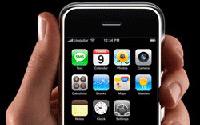 Mobile
app marketing costs jumped 20% to $1.80 per loyal user in July from $1.50 in June, while download volume was up slightly, according to the latest figures from mobile app marketing firm Fiksu.
Mobile
app marketing costs jumped 20% to $1.80 per loyal user in July from $1.50 in June, while download volume was up slightly, according to the latest figures from mobile app marketing firm Fiksu.
The firm’s Cost per Loyal User Index tracks how much developers spend to acquire customers who open their apps at least three times a month.
Fiksu attributed the cost spike -- to its
highest level since 2011 -- to growing demand for Facebook’s mobile app advertising tools as well as Apple’s recent step to start including ratings as a factor in App Store rankings. With
higher-rated apps moving up the charts, the company surmised mid-ranked and lower-rated apps began spending more to try to regain ground.
“There’s a major sea change underway, now
that Apple’s ranking algorithm appears to favor highly-rated apps and penalizes others,” stated Fiksu CEO Micah Adler. “App marketers must now work even harder to generate positive
ratings … since user acquisition costs for apps without stellar ratings will now be more expensive.”
In a recent blog post, the company explained that apps with three-star average or lower ratings dropped off precipitously in the
rankings starting last month, while those with four or more stars shot up in the charts. Ranking was previously based mainly on the number of app downloads and how fast they were happening.
Whether Apple’s updated ranking algorithm will increase developer costs over the long term is unclear. One could image that developers with higher-rated apps might decide to spend less on
hawking their apps in light of the change.
As for the Facebook factor, Fiksu suggested the popularity of the social network’s mobile app install ads continue to help drive up costs as
developers bid up pricing on the placement that lets users downloads apps from within the ad unit.
After a modest decline in June, app download volume was up 4% in July to 5.8 million, based
on Fiksu’s App Store Competitive Index, which measures average daily downloads among the 200 most popular free U.S. iPhone apps. That total was up 33% from a year ago, in part due to wider
adoption of iPhones and apps in that time.